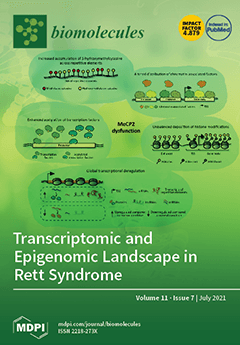Coronary artery disease (CAD) is the leading cause of morbidity and mortality in women worldwide. Its social impact in the case of premature CAD is particularly devastating. Many differences in the presentation of the disease in women as compared to men, including atypical
[...] Read more.
Coronary artery disease (CAD) is the leading cause of morbidity and mortality in women worldwide. Its social impact in the case of premature CAD is particularly devastating. Many differences in the presentation of the disease in women as compared to men, including atypical symptoms, microvascular involvement, and differences in pathology of plaque formation or progression, make CAD diagnosis in women a challenge. The contribution of different risk factors, such as smoking, diabetes, hyperlipidemia, or obesity, may vary between women and men. Certain pathological pathways may have different sex-related magnitudes on CAD formation and progression. In spite of the already known differences, we lack sufficiently powered studies, both clinical and experimental, that assess the multipathogenic differences in CAD formation and progression related to sex in different age periods. A growing quantity of data that are presented in this article suggest that thrombosis with fibrinogen is of more concern in the case of premature CAD in women than are other coagulation factors, such as factors VII and VIII, tissue-type plasminogen activator, and plasminogen inhibitor-1. The rise in fibrinogen levels in inflammation is mainly affected by interleukin-6 (IL-6). The renin–angiotensin (RA) system affects the inflammatory process by increasing the IL-6 level. Unlike in men, in young women, the hypertensive arm of the RA system is naturally downregulated by estrogens. At the same time, estrogens promote the fibrinolytic path of the RA system. In young women, the promoted fibrinolytic process upregulates IL-6 release from leukocytes via fibrin degradation products. Moreover, fibrinogen, whose higher levels are observed in women, increases IL-6 synthesis and exacerbates inflammation, contributing to CAD. Therefore, the synergistic interplay between thrombosis, inflammation, and the RA system appears to have a more significant influence on the underlying CAD atherosclerotic plaque formation in young women than in men. This issue is further discussed in this review. Fibrinogen is the biomolecule that is central to these three pathways. In this review, fibrinogen is shown as the biomolecule that possesses a different impact on CAD formation, progression, and destabilization in women to that observed in men, being more pathogenic in women at the early stages of the disease than in men. Fibrinogen is a three-chain glycoprotein involved in thrombosis. Although the role of thrombosis is of great magnitude in acute coronary events, fibrinogen also induces atherosclerosis formation by accumulating in the arterial wall and enabling low-density lipoprotein cholesterol aggregation. Its level rises during inflammation and is associated with most cardiovascular risk factors, particularly smoking and diabetes. It was noted that fibrinogen levels were higher in women than in men as well as in the case of premature CAD in women. The causes of this phenomenon are not well understood. The higher fibrinogen levels were found to be associated with a greater extent of coronary atherosclerosis in women with CAD but not in men. Moreover, the lysability of a fibrin clot, which is dependent on fibrinogen properties, was reduced in women with subclinical CAD compared to men at the same stage of the disease, as well as in comparison to women without coronary artery atherosclerosis. These findings suggest that the magnitude of the pathological pathways contributing to premature CAD differs in women and men, and they are discussed in this review. While many gaps in both experimental and clinical studies on sex-related differences in premature CAD exist, further studies on pathological pathways are needed.
Full article






